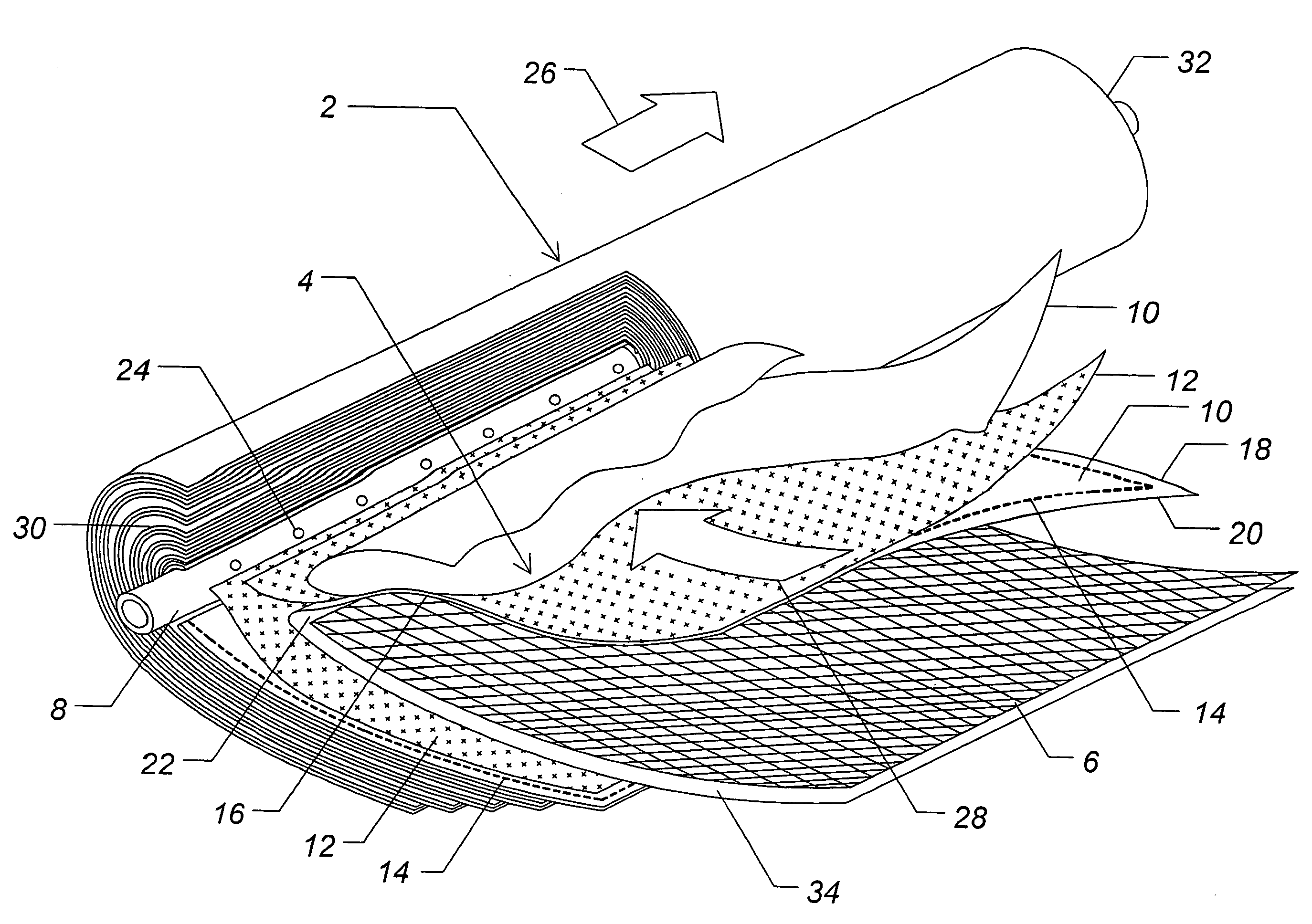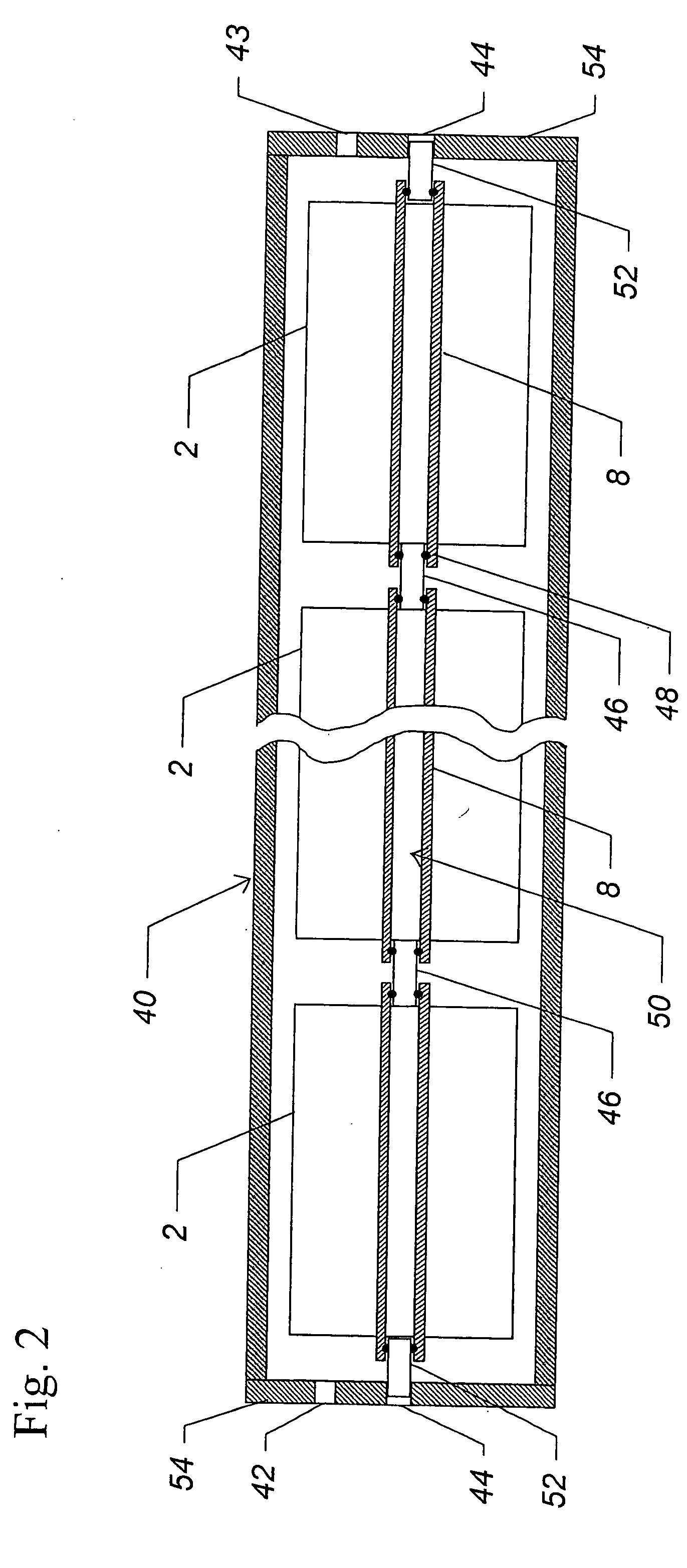Method for Testing Separation Modules
a technology of separation module and test method, applied in the direction of porous material analysis, suspension, membrane, etc., to achieve the effect of enhancing permeation signal, improving sensitivity to defects, and enhancing signal
- Summary
- Abstract
- Description
- Claims
- Application Information
AI Technical Summary
Benefits of technology
Problems solved by technology
Method used
Image
Examples
example 1
[0064]A spiral wound brackish water hyperfiltration module was run at 67 psi using a pure water feed. For thirty seconds, the feed to the module was switched to a solution of 2000 ppm MgSO4. The feed source was switched back to pure water, and the resulting pulse in feed challenge concentration, as determined by conductivity measured at the input end of the module, had a FWHM of less than 40 seconds. The relative challenge concentrations within the feed pulse is shown as #0 in FIG. 6.
[0065]Within the permeate tube of the spiral wound module, a probe segregated permeate from selected regions corresponding to individual holes in the permeate tube. The probe comprised twelve conduits (0.0125″ outer diameter) of more than one meter in length. The presence of these many conduits within the permeate tube would have substantially increased backpressure on the module, although this increase was not measured.
[0066]FIG. 6 shows the relative concentrations measured by conductivity sampled from...
example 2
[0068]A spiral wound seawater hyperfiltration module (FilmTec SW30-2540) having an insert leak at one end was tested using the method of the invention using a pulse of challenge species in the feed. The pulse was created by temporarily replacing pure water with a challenge species feed solution of 1700 ppm MgSO4. The FWHM of the pulse was slightly less than 40 seconds. The applied pressure during the test was 227 psi.
[0069]The 40 inch long module was tested with two different orientations. In a first test, the module was oriented relative to the pressure vessel so that the insert leak was at the inlet end. All permeate was removed from that inlet end of the module. In a second test, the module was reversed so that the leak was at the end farthest away from both the inlet end and the permeate removal end. The second test demonstrated a delay of ten seconds in the peak position relative to the peak position observed in the first test. We believe this delay was due to this change in or...
example 3
[0070]Twenty seawater spiral wound modules (FILMTEC SW30-2540) were tested using the method of the invention at 150 psi applied pressure with a challenge pulse. Pure water was replaced temporarily with a pulse having FWHM less than 40 seconds. At its peak concentration, this feed pulse was approximately 3% MgSO4, resulting in an osmotic strength of about 100 psi. Conductivity was used to measure concentration of the permeate and was recorded as a function of time during this pulse test.
[0071]“Intact” modules, as determined from later standard seawater tests (3.2% NaCl, 800 psi), demonstrated similar time profiles for MgSO4 in the permeate. FIG. 7 shows a time profile for a leaking module (A) and for an “intact” module (B). The leaking module demonstrated higher peak concentration and an earlier peak elution time, both individually indicative of a defect. In this example, improved sensitivity to defects can also be obtained by subtracting the time profile for a typical “intact” modul...
PUM
 Login to View More
Login to View More Abstract
Description
Claims
Application Information
 Login to View More
Login to View More - R&D
- Intellectual Property
- Life Sciences
- Materials
- Tech Scout
- Unparalleled Data Quality
- Higher Quality Content
- 60% Fewer Hallucinations
Browse by: Latest US Patents, China's latest patents, Technical Efficacy Thesaurus, Application Domain, Technology Topic, Popular Technical Reports.
© 2025 PatSnap. All rights reserved.Legal|Privacy policy|Modern Slavery Act Transparency Statement|Sitemap|About US| Contact US: help@patsnap.com



